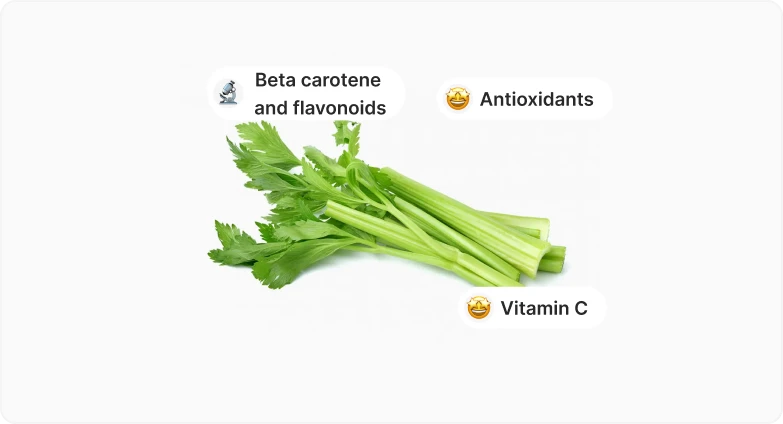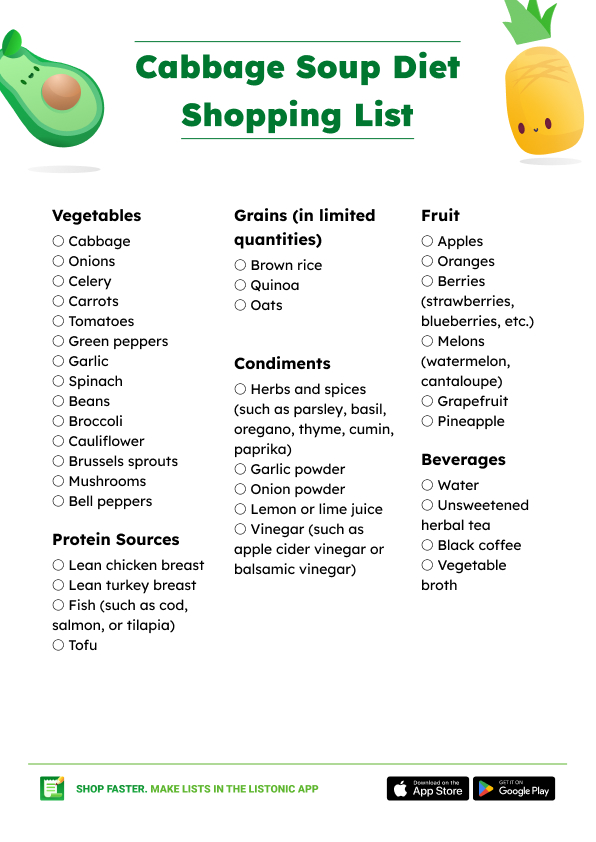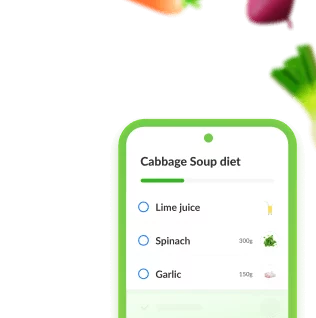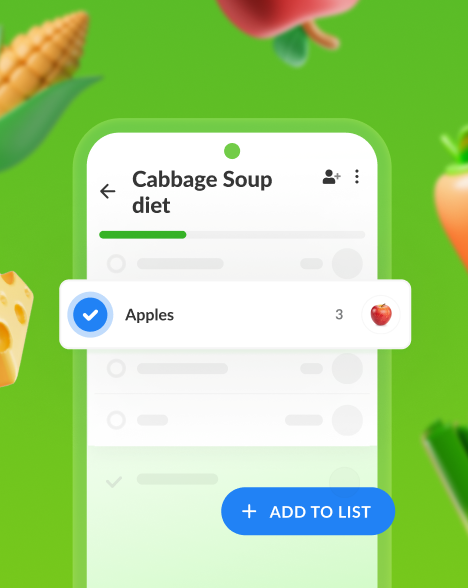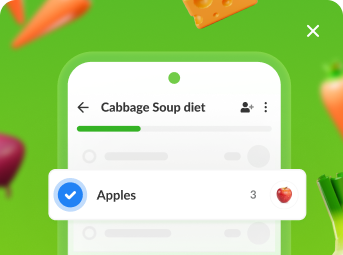Privacy Policy | Terms of services | Consent choices | © 2006-2024 Listonic. All rights reserved. Listonic Dev, and Listonic Ads are part of Listonic.
Cabbage Soup Diet Food List (+ Shopping List and PDF)
July 3, 2023
The cabbage soup diet is often a jump-start to a long-term diet plan. Because of its very low calorie intake, it is not recommended as a long-term diet but as a means to get you started. In the article, we explore the principles of a cabbage soup diet and provide you with a handy shopping list to help you navigate the cabbage soup diet.
Table of contents
Cabbage Soup Diet Shopping List
Cabbage Soup Diet Guidelines
Cabbage Soup Food List Breakdown
What Else to Keep in Mind?
Conclusions
Cabbage Soup Diet Shopping List
Cabbage Soup Diet Guidelines
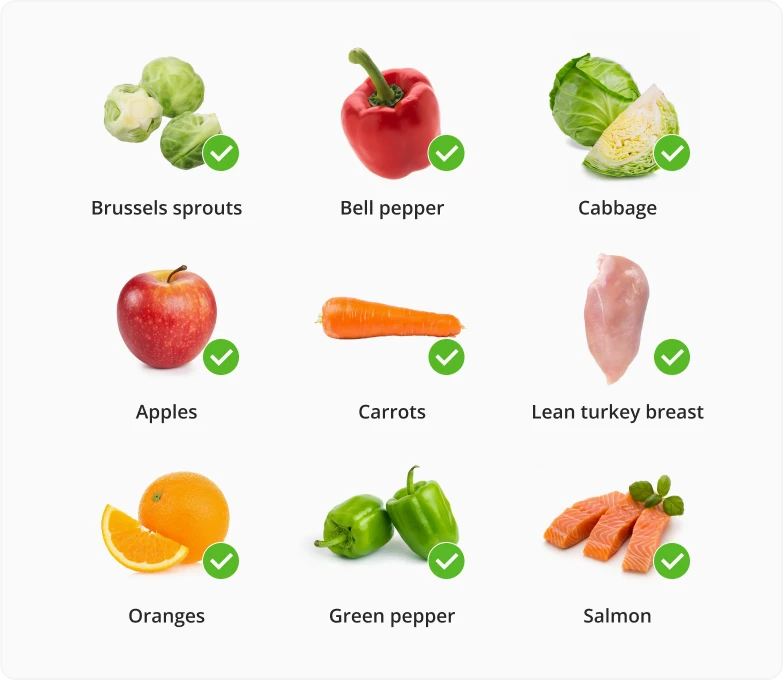
The cabbage soup diet is a short-term weight loss program that involves consuming cabbage soup as the main component of your meals. You follow this simple diet for a week to jumpstart your weight loss journey or to detoxify your organism. The guidelines of the cabbage soup diet are straightforward. You are encouraged to eat as much cabbage soup as you like throughout the day, whenever you feel hungry.
The soup typically consists of cabbage, onions, tomatoes, peppers, carrots, and other non-starchy vegetables, simmered in a flavorful broth. It is low in calories but rich in fibre, which makes it a quite filling meal.
In addition to the soup, the diet allows for certain other foods in small portions. For example, you can consume fruits, vegetables, lean proteins like chicken or fish, and grains. However, processed foods, sugary beverages, and high-fat products are generally not allowed.
While there are no strict portion limits for the cabbage soup itself, you should listen to your body’s hunger cues and eat until you are satisfied but not overly full. You should also remember to drink plenty of water and moderate amounts of herbal tea and black coffee to stay hydrated throughout the day.
It’s important to note that the cabbage soup diet is intended for short-term use (it’s typically a 7 day diet) and should not be followed for an extended period.
Cabbage Soup Food List Breakdown
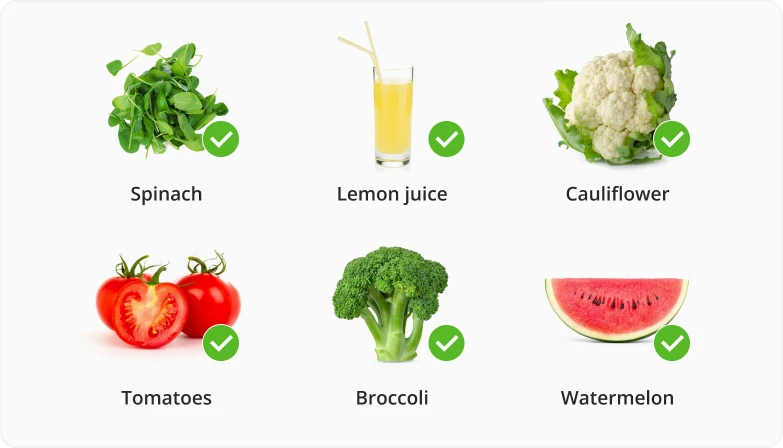
Vegetables
The cabbage soup diet emphasizes the consumption of various vegetables because they are low in calories and rich in fiber, vitamins, and minerals. Besides cabbage, you can eat onions, celery, carrots, tomatoes, green peppers, garlic, spinach, broccoli, cauliflower, beans, Brussels sprouts, and mushrooms.
They boost the volume of your meals, providing a sense of fullness without adding excessive calories. Vegetables are essential for a well-rounded diet as they promote weight management and overall health.
Protein
It is crucial for muscle maintenance, satiety, and metabolic functions. It also helps to prevent muscle loss resulting from a low-calorie intake. While on the cabbage soup diet, you should focus on lean sources of protein, such as chicken breast, turkey breast, fish, and tofu. These options are relatively low in fat but provide essential amino acids.

Fruits
They offer a refreshing and nutritious addition to the cabbage soup diet. Apples, oranges, berries, melons, grapefruits, and pineapples can provide natural sweetness and variety to the diet.
Fruits contain natural sugars, so they should be consumed in moderation. However, they are also packed with essential vitamins, health-promoting minerals, and antioxidants.
Grains (in limited amounts):
The cabbage soup diet allows for whole grains like brown rice, quinoa, and oats in small portions. They are a source of carbohydrates, fiber, and vital nutrients, so they are satiating and can help sustain energy levels throughout the day. Whole grains also add variety to your meals, making your diet more enjoyable.
However, you should keep the servings small because of the calorie density of grains.
Beverages
Staying hydrated is crucial on the cabbage soup diet. Water is the main beverage, essential for maintaining bodily functions, promoting digestion, and overall well-being.
Unsweetened herbal tea and black coffee (in moderation) are great options to diversify your dietary plan without adding extra calories. Additionally, vegetable broth can serve as a warm, low-calorie savory drink.
Condiments
On the cabbage soup diet, condiments play a minor role and should not be used in excess as they increase appetite and can lead to overeating.
Nevertheless, herbs, spices, lemon juice, and vinegar (such as apple cider vinegar or balsamic vinegar) can add flavor to your meals without significantly increasing calorie intake. These spices will allow you to be culinarily creative while keeping your meals low in calories and free of chemical additives.
Get a Cabbage Soup Diet Grocery List on Your Phone!
Add & remove items
Sort items by store aisles
Share the list with your partner
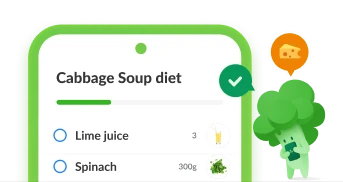

What Else to Keep in Mind?
What Foods to Avoid?
Several categories of foods are typically recommended to be avoided. These include:
Processed Foods: It's best to steer clear of processed foods such as packaged snacks, frozen meals, and fast food items. These are often high in unhealthy fats, sodium, and additives, which may prevent you from losing weight.
Sugary Beverages: You should avoid drinks like soda, sweetened juices, and energy drinks. They are high in calories and sugar, so they are not recommended on the cabbage soup diet.
High-Fat Foods: Foods rich in saturated fats, such as fried foods, fatty cuts of meat, full-fat dairy products, vegetables like avocado, and high-fat sauces or dressings, should be avoided. It is also recommended to avoid eggs.
Refined Grains: You are encouraged to cut down on refined grains products, such as white bread, white rice, and pasta. They are low in fiber and may cause spikes in blood sugar levels.
Alcohol: Alcoholic beverages are generally discouraged on a cabbage diet due to their high calorie content which can result in weight gain.
Cabbage Soup Recipe + Ingredients
Here's a simple and nutritious cabbage soup recipe that you can enjoy while following the cabbage soup diet. Remember that you can eat the soup whenever you feel hungry throughout the day. Feel free to customize the recipe by adding herbs, spices, or additional non-starchy vegetables to suit your taste preferences.
Ingredients:
1 small head of cabbage, chopped
2 onions, diced
2 bell peppers (any color), diced
4 carrots, sliced
4 celery stalks, sliced
4 tomatoes, diced
4 cloves of garlic, minced
6 cups of vegetable broth
2 tablespoons of olive oil
1 teaspoon of dried herbs (such as thyme or oregano)
Salt and pepper to taste
Instructions:
1. Heat the olive oil in a large pot over medium heat.
2. Add the onions and garlic, and sauté until they become translucent.
3. Add the bell peppers, carrots, and celery. Cook for about 5 minutes until slightly tender.
4. Stir in the chopped cabbage and tomatoes. Cook for another 5 minutes.
5. Pour in the vegetable broth and add the dried herbs. Season with salt and pepper to taste.
6. Bring the soup to a boil, then reduce the heat to low and let it simmer for about 20-25 minutes until all the vegetables are tender.
7. Season if necessary.
8. Serve the cabbage soup hot.
What Are The Cons of the Cabbage Soup Diet?
While this diet has been around for decades and has many supporters, it's important to consider the potential drawbacks and limitations emphasized by its opponents.
Nutritional Imbalance: The cabbage soup diet is very restrictive and lacks balance in terms of nutrients. It typically excludes major food groups like grains, lean proteins, and healthy fats, which are necessary for overall health and well-being. If you follow this diet for an extended period, you may end up with nutrient deficiencies.
Temporary Weight Loss: While the cabbage soup diet may lead to rapid initial weight loss, much of it is typically water, not fat loss. Once you return to your normal eating patterns, your weight is likely to go up.
Lack of Variety: The diet heavily relies on cabbage soup as the primary source of nourishment. It can be challenging to sustain this diet due to its monotony and limited food options.
Potential Side Effects: Some people can experience side effects such as digestive discomfort, bloating, and fatigue due to the high fiber intake of the cabbage soup diet.
Unsuitable for Everyone: The cabbage soup diet may not be suitable for people with certain medical conditions or dietary restrictions. It's important to consult with a healthcare professional or registered dietitian before starting any restrictive diet plan.
Conclusions
The cabbage soup diet can serve as an effective method to kick-start weight loss or facilitate a short-term detox. However, keep in mind that you should follow the cabbage soup diet for a few days at most, as it is not sustainable in the long term. It is recommendable to switch to a more balanced and varied diet with a higher calorie intake after completing the cabbage soup diet plan. To help you get started, feel free to use our shopping list or a PDF.
